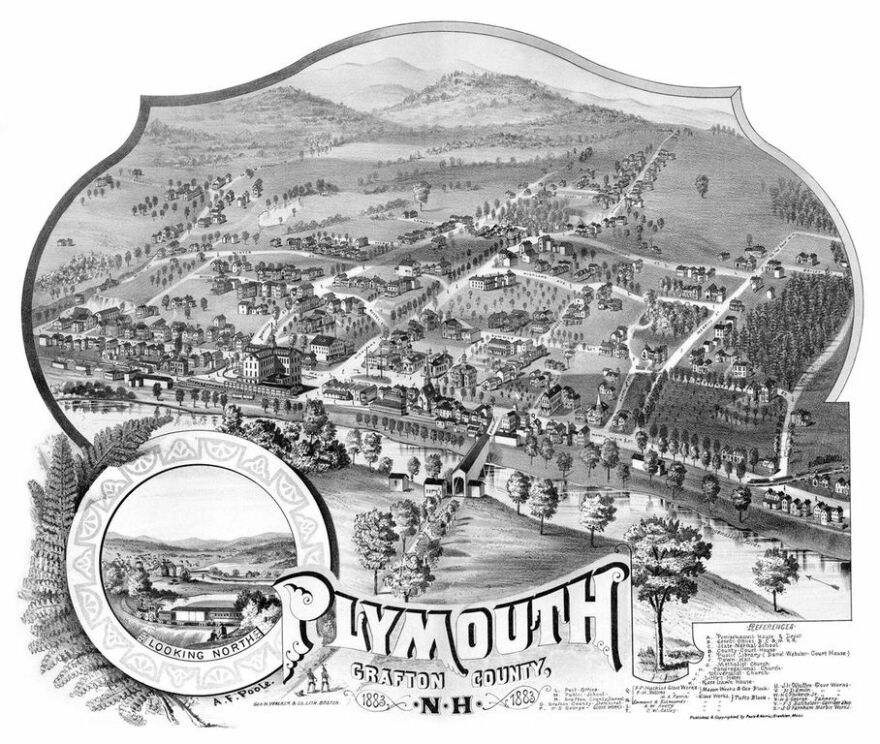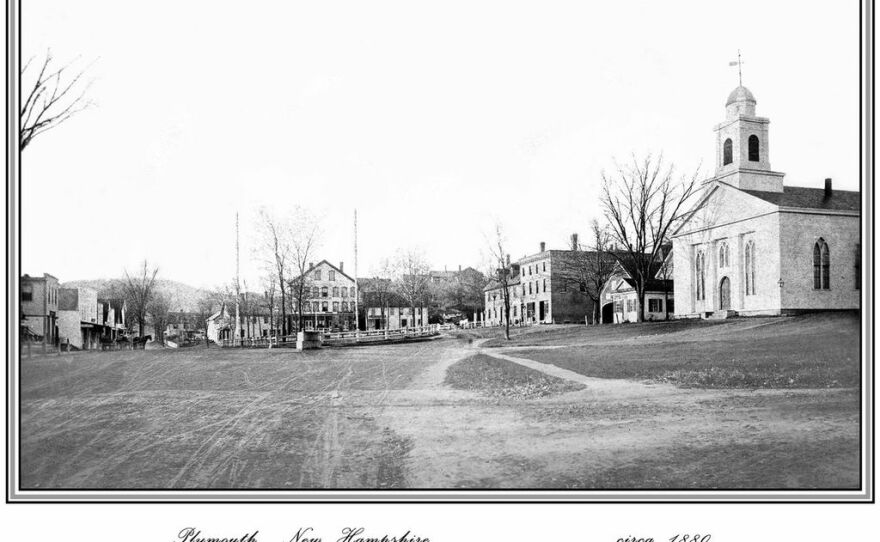The writer Susan Cheever once said that Plymouth, “is a nice enough town but… it’s a town in the middle of nowhere, a town for people on their way to somewhere else”

But many locals in the Grafton County town would disagree. After all, Plymouth has been voted one of the best small towns in America. And nowhere is this town pride more conspicuous than in “Marking the Moment”; a two and a half hour musical written to kick off the town’s 250th anniversary.
Music: “From Wilderness to the joys and sorrows, for all of the people to live to die. Who made this land their own, 200 years and 50 more…”
The show covers the entire history of Plymouth from its settlement to the founding of its university, there’s even a tune about the famous stench that once wafted from the Pemigewasset River.
Music: “The Pemmi it smelled real, real bad, we knew we had to clean it. Together we did what we could to stop that dirty smelly and to stop Big Stinky…”
The musical is a big undertaking for a small town. The cast of 120 local residents ranged in age from 8 to 77. The musical aims to show the many times Plymouth found itself at a crossroads in New Hampshire history.
“Did you know that Samuel Livermore and Francis Wooster both of Plymouth were present in Atchison, New Hampshire in 1787 at the Convention called to consider ratifying the new federal Constitution of the United States of America?”
New Hampshire historian Stuart Wallace says, the town’s very origin owes much to its being a crossroads.
Plymouth would have been seen automatically as valuable location because it is at the mouth of the Baker River where it pours into the Pemigewasett. And so that by itself put Plymouth on the Map.
The first settlers arrived in Plymouth from Hollis, New Hampshire shortly after the French and Indian war. Plymouth grew so quickly, it was granted and incorporated on the same day, July 15th, 1763
The state designated it a ‘half shire town” and built a courthouse.
The courthouse gave one of country’s most famous lawyers, Daniel Webster his first shot.

Do you remember your first trial; Mr. Webster? One of my earliest trials was right here in Plymouth. I tried the case in 1806 my own father sat on the bench.
Webster didn’t win that trial, but according to former historical society president Betty Batchelder, it was a tough case to try.
At that time the person he was defending was in prison and he’s had two witnesses that saw what he did so, he didn’t have too much to do to defend him, but he did get his execution stayed for 2 months
Music: So I stood claimed the privilege, to spare his life. Yes its true Daniel Webster, yes it’s true. Of course, it’s true
In 1850, the Boston to Concord to Montreal Railroad line was built right through Plymouth. That brought growth and strengthened industry.
The writer Nathaniel Hawthorne was taking the train through Plymouth with former President Franklin Pierce, when he fell ill in 1864. The two spent the night at the Pemigewasset House in town and Hawthrone died the next day.
Hawthorne didn’t have a chance to write about Plymouth but another giant in American letters did. Robert Frost, who before becoming a big name poet, taught at the Plymouth Normal School, now Plymouth State University for one year in 1911. While there he wrote a poem about the town called “Good hours”. Here’s Plymouth state University professor Louise McCormack reading it

I had for my winter evening walk, no one at all with whom to talk, but I had the cottages in a row up to their shining eyes in snow….
He describes leaving his place up here and walking.
That’s retired Supreme Court Justice Bill Batchelder, who has lived his entire life in Plymouth.
And he describes the relaxation of seeing the day ending.
I had a glimpse through curtain laces of youthful faces. I had such company outward bound. I went until there were no more cottages found
And he then does a 180 and describes getting back on the snow, and late at night and all of the houses are now secured, the lanterns are out
Over the snow my creaking feet, disturbed the slumbering village street. Like profanation by their leave and 10 o’clock of a winter eve.
That’s a poem that can be attributed to Plymouth. It suggests that perhaps the evening hours around dinner time can be enriching to the mind and invigorating to the person.
But the man who arguably invigorated Plymouth the most, at least economically was Alva McQuesten. He figured out that if you rubbed off the grain of deer hide and applied oil to it, it would make the skin soft and supple. He patented this process and a glove making industry was born.

Two tanners were Jason Draper and John Maynard. Their fortunes changed one day in 1882, when a professional baseball player, named Arthur Irwin paid a visit in nearby Ashland. Irwin was a shortstop for the Providence Grays. He had broken several fingers and according to Plymouth State University Professor Louise McCormack, Irwin had an idea.
He is summering in the area; he asks if they could possibly produce a glove that would protect his hand.
And from that came, the first modern manufactured baseball glove. Draper and Maynard grew, and moved their company to Plymouth.
The company was the first to have big time baseball players endorse their glove by stamping their signature on it. Cy Young, Casey Stengel, and even Babe Ruth came to Plymouth to back the Draper and Maynard product and according to lawyer and Plymouth native Ross Deachman, they also came to play ball.

This would be the guy who pitched the 6th game of the World Series and would be pitching a week later at the D&M park in Plymouth
Ladies and gentlemen , boys and girls, Babe Ruth has to return to Boston in just a few minutes, he’ll only have time to sign a few more autographs on behalf of the Draper and Maynard company in Plymouth
Draper and Maynard in closed in 1937 but some of the buildings now house Plymouth’s current big business, education.
Plymouth State University alma mater
What started as Plymouth Normal School in 1871, became Plymouth Teacher’s College which became Plymouth State College and then in 2003, it became Plymouth State University. Every fall, upwards of 4000 students descend on the town.

So to get back to Susan Cheever quote, a ‘town for people on their way to someone else’. There may be some truth to that. Plymouth has been an intersection and a place where a lawyer and a poet made their marks before finding stardom, where the National pastime was modernized, and to this day where thousands of young students get an education before pushing off into the futures.
Alma matter
For New Hampshire Pubic Radio, I’m Keith Shields
Click here to learn more about Plymouth's 250th celebration


















